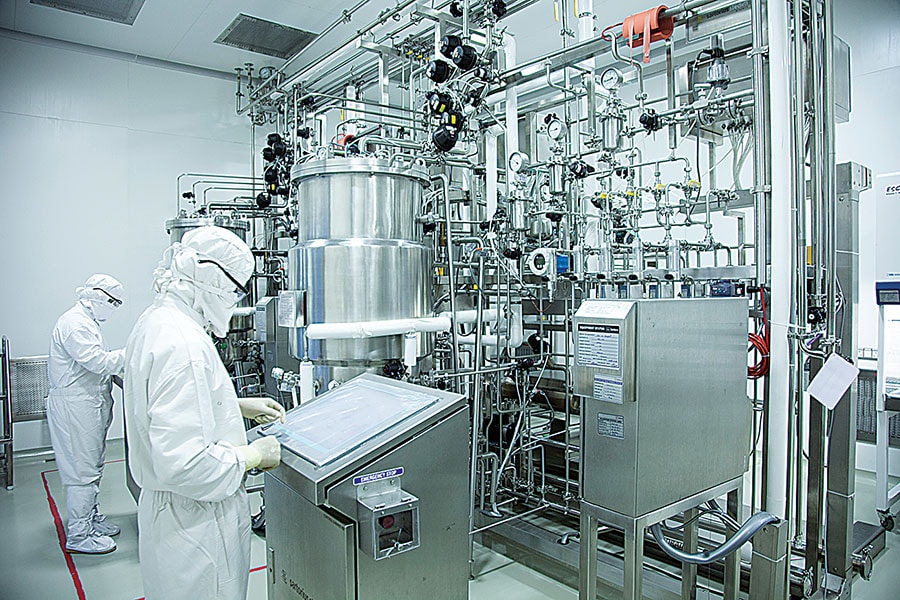
Will made-in-India Sputnik V be the country's salvation?
As India struggles with vaccine shortages and a laggard inoculation programme, a clutch of local manufacturers, including Hetero Group of Companies, Gland Pharma and Stelis Biopharma has set out to produce the contentious Sputnik V vaccine in a bid to alleviate supply constraints. Subscribe to Forbes India for early access
 Interior View of Hetero Biopharma manufacturing facility, Jadcherla, Hyderabad, India.
Interior View of Hetero Biopharma manufacturing facility, Jadcherla, Hyderabad, India.
Vamsi Krishna Bandi believes that the Russian Sputnik-V vaccine has the potential to be a game-changer in India’s inoculation programme.
Six months ago, the managing director of Hyderabad-based Hetero Group of Companies was the first Indian pharma firm to commit to making 100 million doses of the vaccine for the Russian Direct Investment Fund (RDIF). “In September, we were not sure whether Sputnik V would be launched in India,” recalls Bandi “But someone had to take the risk. We felt we should take the risk.”
The RDIF has since secured tie-ups with four other manufacturers that would take the tally of Sputnik V vaccines manufactured in the country to over 850 million doses. This makes India the biggest global producer of the vaccine, which is developed with two human adenoviral vectors, has an efficacy of 91.6 percent, and is the third vaccine to be approved for emergency use by India’s regulator, the Drugs Controller General of India (DCGI), in April.
Apart from Hetero, the RDIF tie-ups in India are with Gland Pharma [252 million doses], Stelis Biopharma [200 million doses], Panacea Biotec [100 million doses] and Virchow Biotech [200 million doses]. On May 17, Raichur-based Shilpa Medicare struck a separate deal with Dr Reddy’s to manufacture 50 million doses of the Sputnik V in India, taking the total production to over 900 million doses in India.
The first batch of the vaccine containing 1.5 lakh doses, imported by Dr Reddy’s Laboratories, arrived in India on May 1. The Hyderabad-based company has a deal with the RDIF to sell vaccines in India, and did a soft launch of the Sputnik V on May 14. Over the next 12 months, Dr Reddy’s plans to vaccinate 125 million people, under a two-dose regimen.
(This story appears in the 30 November, -0001 issue of Forbes India. To visit our Archives, click here.)





